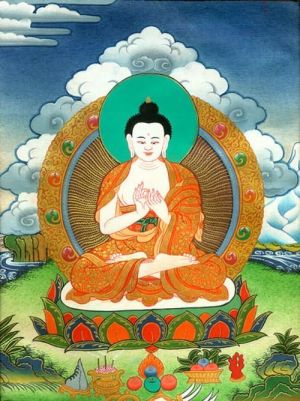Practices To Benefit the Dead
According to Lama Zopa Rinpoche, the most essential practices are these:
• Perform Medicine Buddha puja and Medicine Buddha practice.
• Recite the eight prayers that are normally done in monasteries when someone passes away.
In addition, if one is able, the following prayers and practices can be done:
• Perform Vajrasattva tsog puja (available in Essential Buddhist Prayers Vol. 2, published by FPMT Education Department).
• Make many thousands of light offerings (following the extensive light offering practice composed by Kyabje Zopa Rinpoche, available in Essential Buddhist Prayers Vol. 2, published by FPMT Education Department) or other extensive offerings (water bowls, flowers, and so on.)
• Do Nyung Nä practice.
• Do a weekend Vajrasattva retreat, Chenrezig retreat, or Medicine Buddha retreat (or all of them.)
• Meditate on tong-len together with recitations of OM MANI PADME HUM and dedicate for the person who has died. (This can be done for half a day or one session.)
• Recite the King of Prayers many times. (This can be done for one full day, or for a weekend.)
• Recite the Vajra Cutter Sutra.
• Recite and meditate on the Heart Sutra.
• Meditate on emptiness, dedicating for the person who died. (This can be done for one session or for one day. Or organize a weekend group retreat on emptiness.)
• Perform Dorje Khadro fire puja as a group, dedicating for person who died.
• Make stupas or tsa-tsas. (The most important thing is to dedicate and say the name of the person who died as you insert the 4 powerful mantras. Doing this can change the circumstances of a person who is going to be reborn in the lower realms, benefiting them to have the causes to be reborn in a good rebirth.)
• Make thangkas or statues and dedicate for the person’s good rebirth. (Of course, it doesn’t have to be a 500-foot statue!)
• Publish Dharma books or sponsor their publication on behalf of the person who died.
If the person who died practiced tantra, then one can do the following:
• Perform self-initiation and tsog offering of the person’s main deity.
• Do a weekend retreat on the person’s main deity.
One can also make offerings on the person’s behalf, as follows:
• It is very powerful to make offerings to the Sangha on that person’s behalf, as well as to make offering to lay students who have the same Guru as the person who died. This collects an inconceivable amount of merits that you can then dedicate for the person who died.
• Also, one can make offerings to the person’s gurus, or you can make offering to your own Guru on that person’s behalf.
• You can make charity or offerings to the center on the person’s behalf, as the center is a place where people can meditate on the path (lam-rim), where they can learn Dharma, and where they come to purify their minds and collect merit.
• You can make charity on that person’s behalf to sick people, homeless people, to solve other people’s difficulties, to various charities, or to poor people.
• You can also make charity on that person’s behalf to animals.
These are the things that the center can organize as group events, or that people can individually do to whatever extent they are able.
Colophon: This advice was given by Kyabje Zopa Rinpoche to the director of one center when one student of the center died and left a lot of money to the center. Rinpoche also said this is general advice on what to do to benefit when someone has died. Rinpoche said that this is when people must do something for the person who has died; this is the most crucial time for the person.
